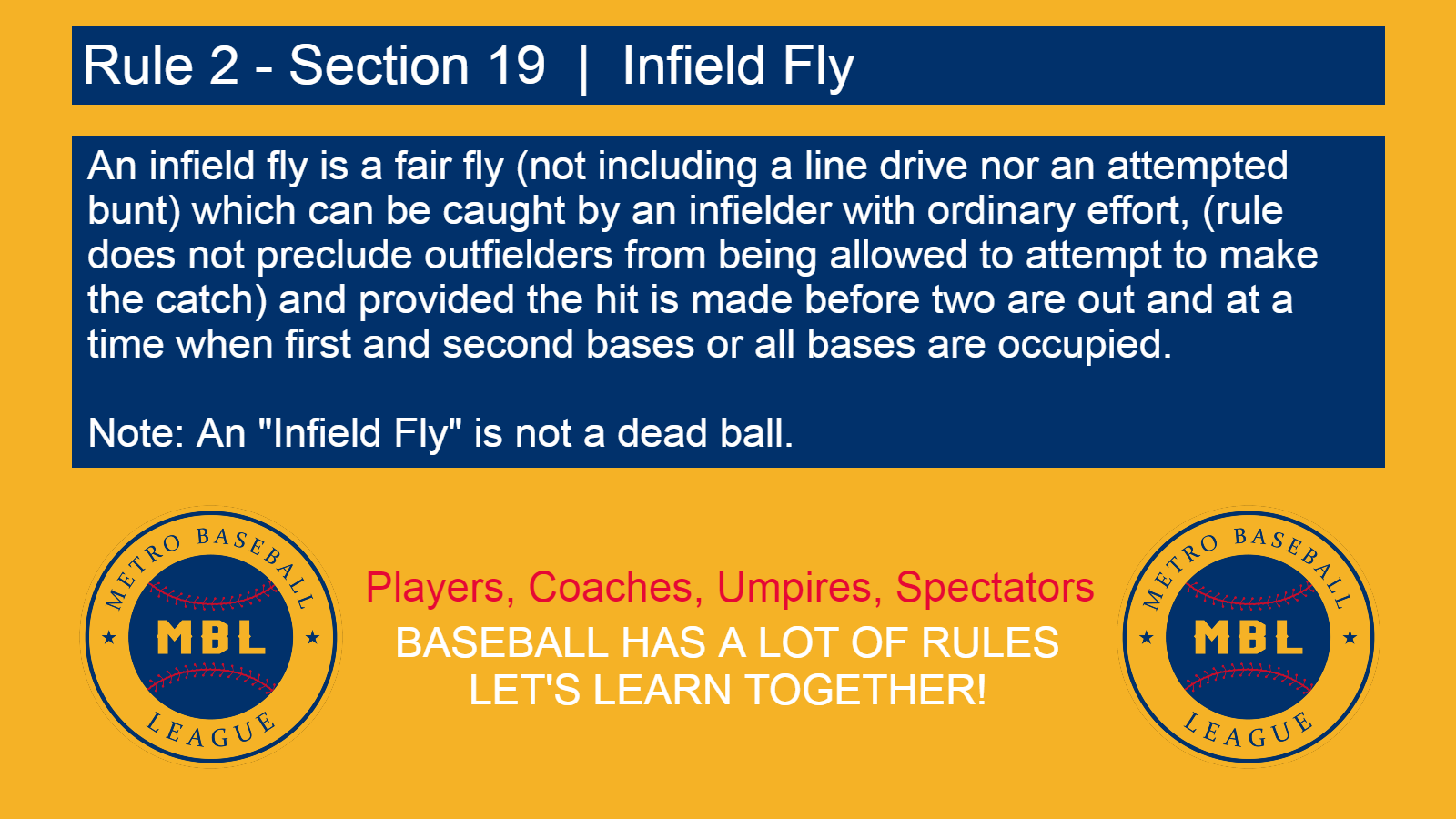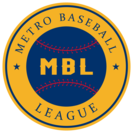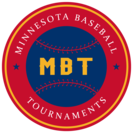Ask the Umpire - Baseball Rules 2025
Baseball has a lot of rules. Let's learn together!
Check out this page throughout the year for rules talk and answers to common rules questions.
Week #3
Question of the Week
Q: "We had a batter called out for interference on a stealing play this week. What's the rule on that?"
ANSWER: Big question here. There was just one of these in the Tennessee vs Arkansas game last weekend. On a stealing play, we are looking at the batter's movement after the pitch, which may affect the catcher's ability to make a play on the runner. In the rule reference below, it is important to note that intent is not a requirement to make the interference call. A batter could unintentionally move in the batter's box to a place where they are interfering with the catcher.
NFHS 7-3-5
Batting Infractions - A Batter Shall Not:
... Interfere with the catcher's fielding or throwing by:
a. leaning over home plate,
b. stepping out of the batter's box,
c. making any other movement, including follow-through interference, which hinders actions at home plate or the catcher's attempt to play on a runner; or
d. failing to make a reasonable effort to vacate a congested area when there is a throw to home plate and there is time for the batter to move away.
PENALTY: When there are two outs, the batter is out. When there are not two outs and the runner is advancing to home plate, if the runner is tagged out, the ball remains live and interference is ignored. Otherwise, the ball is dead and the runner is called out. When an attempt to put out a runner at any other base is unsuccessful, the batter is out and all runners must return to bases occupied at the time of the pitch. If the pitch is a third strike and in the umpire's judgment interference prevents a possible double play (additional outs), two may be ruled out. [8-4-2g, 8-4-21(1)]
Rule of the Week
Definition of a Catch
A good umpire school or clinic will repeat "secure possession" and "voluntary release" frequently when talking about what constitutes a catch.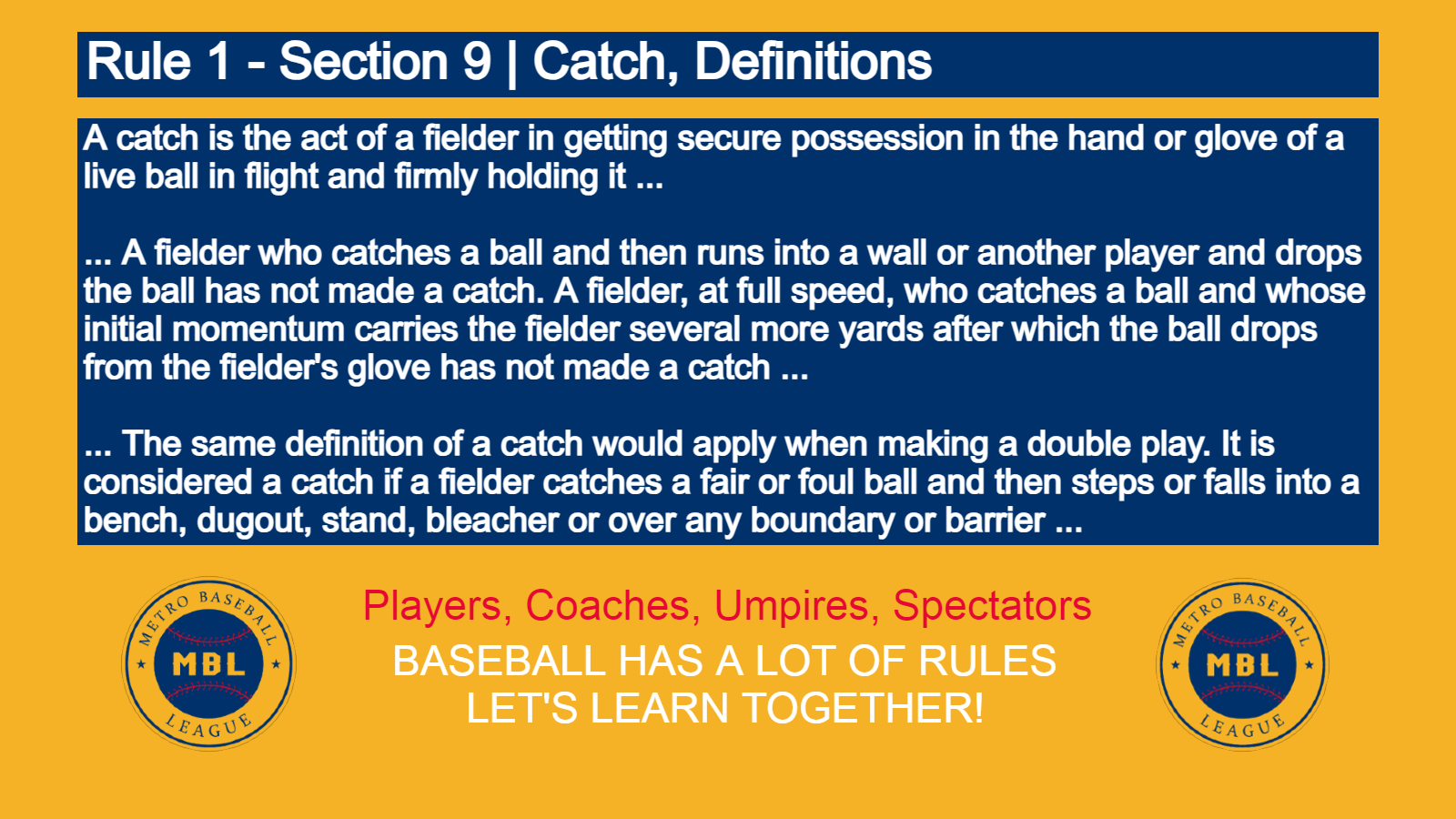
Week #2
Questions of the Week
Q: "Do we still have the 'hybrid' set position for pitchers, or can they declare whether they are in the set or the windup position?"
ANSWER: The "hybrid" position and declaration of set vs windup is not part of NFHS baseball. The determining factor for whether a pitcher is in the set or windup position is the position of the pivot foot. (The right foot for a right-handed pitcher.) If the pivot foot is parallel to the rubber, the pitcher is in the set position. If the pivot foot is NOT parallel to the rubber, the pitcher is in the windup.
NFHS 6-1-1
The pitcher will be considered to be in the set position when the pivot foot is in contact with or directly in front of and parallel to the pitcher's plate. The pitcher will be considered to be in the windup position when the pivot foot is in contact with the pitcher’s plate and is not parallel to it. The pitching regulations begin when the pitcher intentionally contacts the pitcher's plate.
Q: "With no one on base, my pitcher started his delivery and the ball slipped out of his hand. The ball rolled about 10 feet from the mound. What's the ruling on this?"
ANSWER: With no one on base, this is a no pitch - so long as the ball did not cross a foul line. If a runner was on base at the time, and the ball did not cross a foul line, this would be a balk.
NFHS 6-1-4
Each legal pitch shall be declared by the umpire as a strike, ball, fair or foul hit or a dead ball. A pitch dropped during delivery and which crosses a foul line shall be called a ball. Otherwise, it will be called no pitch. A pitch dropped during delivery with at least one runner on base would be a balk if it does not cross a foul line.
Rule of the Week
Sliding
There are many angles to talk about when it comes to the NFHS sliding rule. Today, we are just pointing out a couple of them. One is that runners are never required to slide. If they do, the slide must be legal. You may have seen or heard about a runner being declared out for "not sliding" - these are interference plays. A runner would not be declared out for interference; not for failing to slide.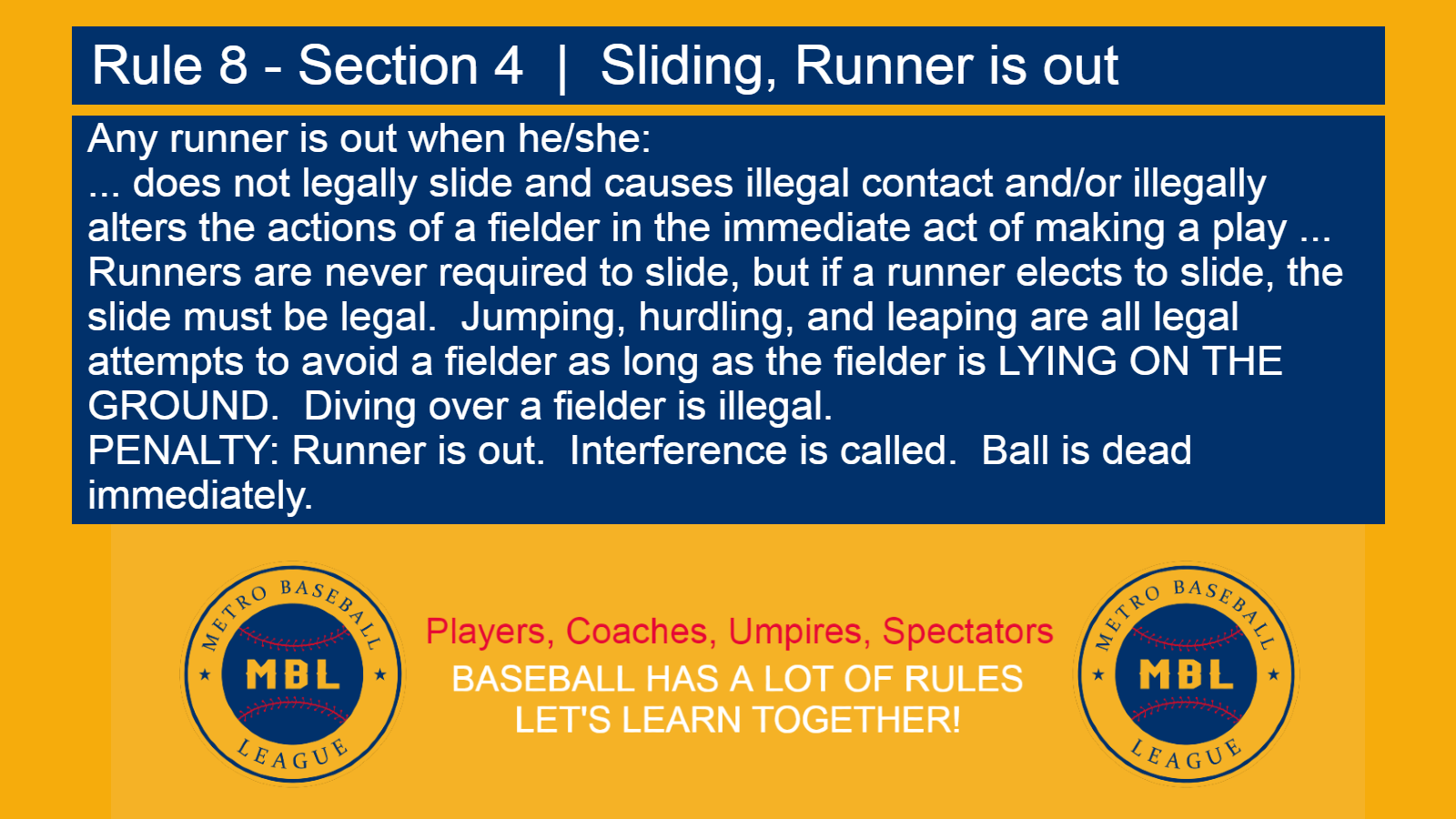
Week #1
Question of the Week
"Can you clarify the rules on whether a player can pitch the first inning and come back and pitch in the 5th inning?"
ANSWER: The rules on this topic differ between MBL league and tournaments that use MBT Qualifier rules. MBL League does not modify the NFHS high school rules regarding a pitcher returning as pitcher. (See below for rule reference.) In MBT Qualifier rules for ages 9-14/15A, only a starting pitcher may return as pitcher, once. In 15AAA and 15AA, MBT Qualifier rules do not modify from NFHS.
NFHS 3-1-2
A player may be removed as pitcher and returned as pitcher only once per inning, provided the return as pitcher does not violate either the pitching, substitution or charged conference rule. If the pitcher, because of an injury or being incapacitated, is replaced as pitcher and the above rule is not satisfied, or if the pitcher's replacement requires more warm-up throws than permitted in 6-2-2 EXCEPTION, the player cannot return to the game as a pitcher.
MBT Qualifier Rules, 9-14/15A
Only the starting pitcher may re-enter a game as a Pitcher once if they have not been removed by rule.
Rule of the Week
Catcher's helmet, protective equipment
The catcher's helmet and mask combination, popular in college, town ball and some professional baseball, is illegal in high school and MBL baseball because it lacks full ear protection.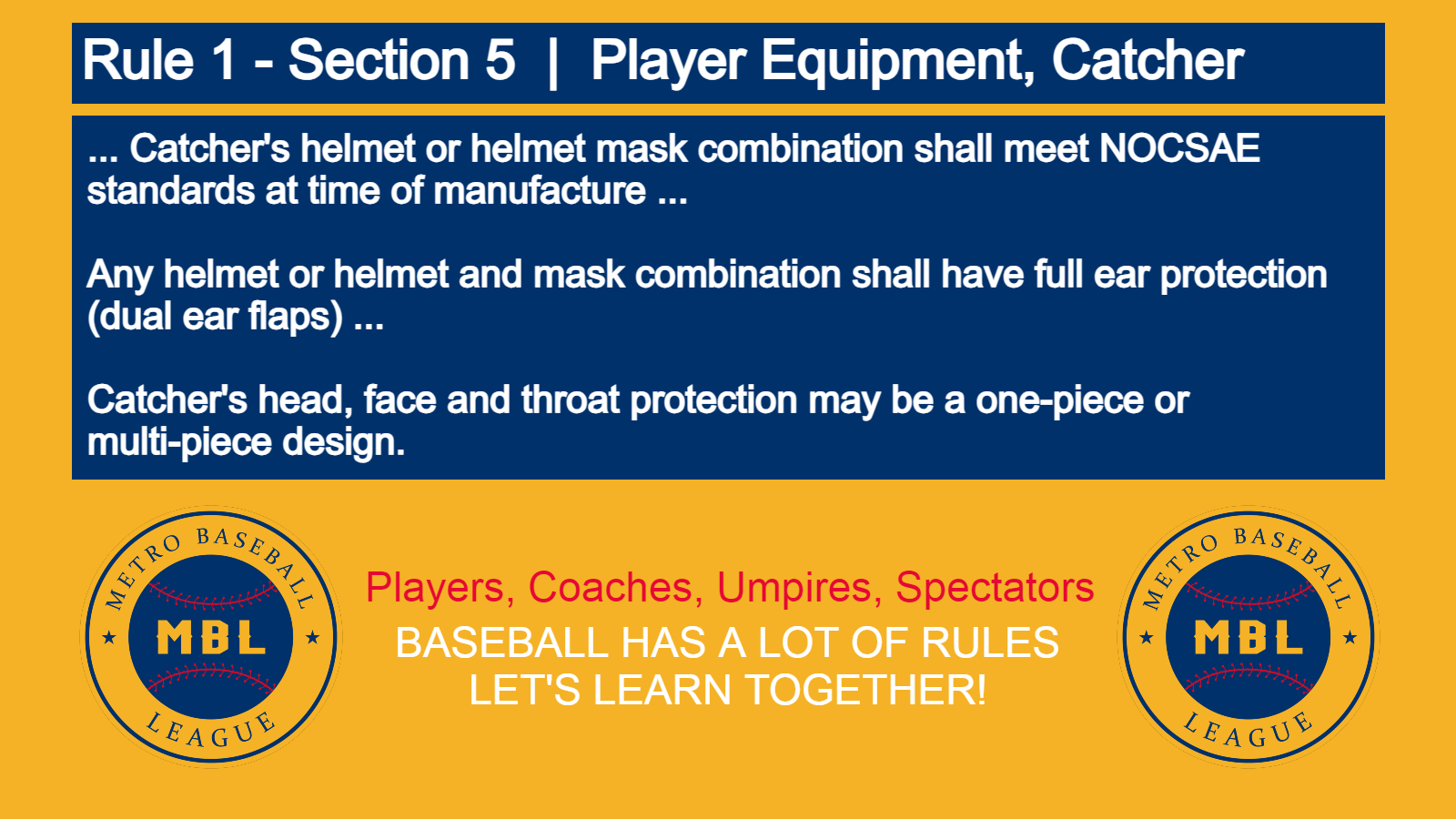
ARCHIVE
Week #4
Question of the Week
"Can a catcher use a softball catcher's glove?"
"Can a right fielder use a first baseman's glove?"
ANSWER: Yes to both questions. A catcher is the only position player that can use a glove of any size - no restrictions. All other position players must use a glove that has dimensions adhering to the NFHS rules regarding height, palm width and web width. The shape or design of the glove is not applicable. (The only exception is the color of a pitcher's glove, which is restricted.)
Rule of the Week
Rules notes on the Set Position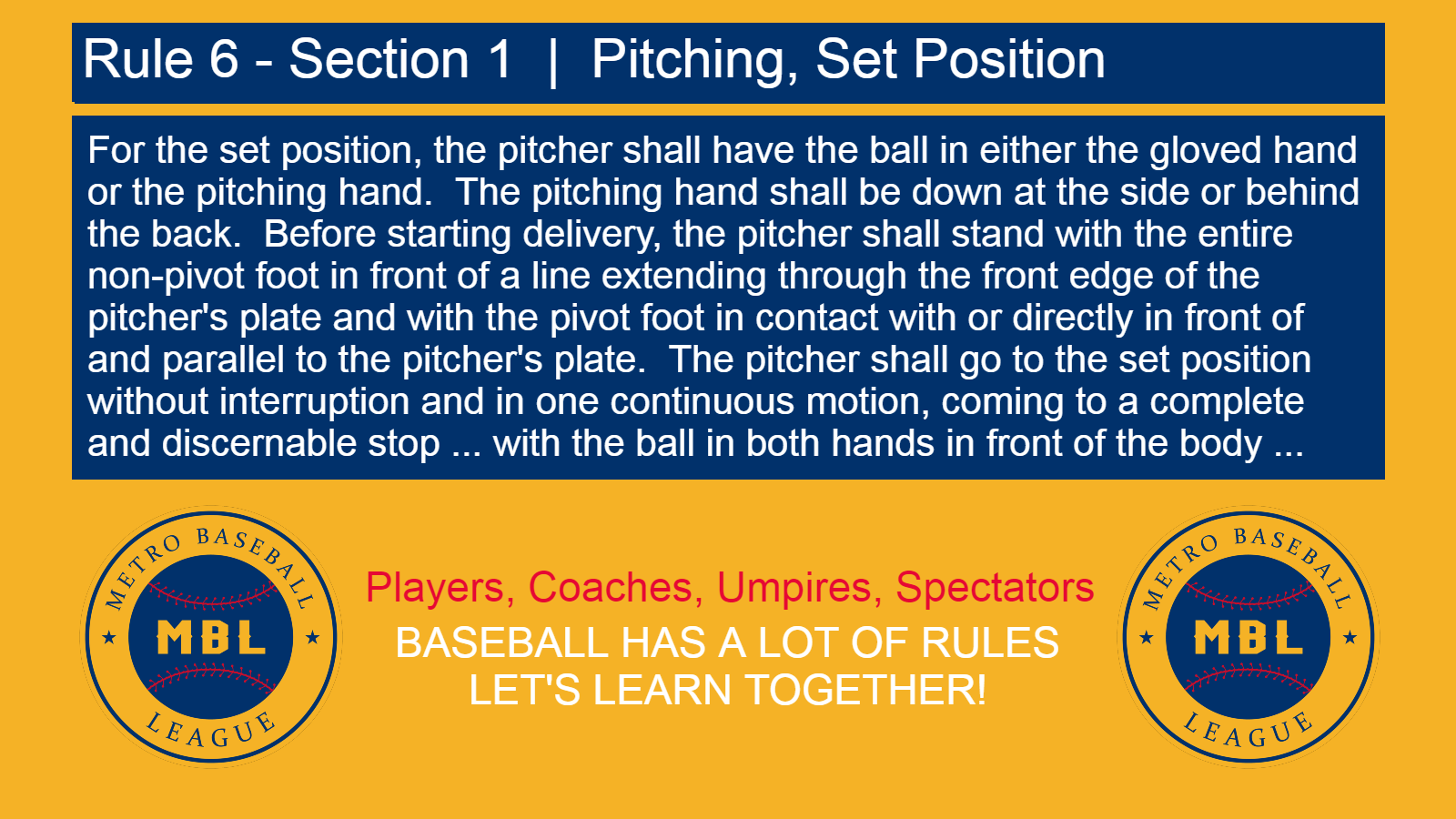
Week #3
Question of the Week
"It seems like our umpires are allowing way too many warm-up pitches between innings. Is there a rule about this?"
ANSWER: Yes, this is addressed in the rules book. A starting pitcher gets up to 8 warm-up pitches, completed in one minute (timed from the first throw). A returning pitcher gets up to 5 warm-up pitches, completed in not more than 1 minute (timed from the third out of the previous half inning.)
Rule Reference: 6-2-2
Rule of the Week
When does a dead ball become live again?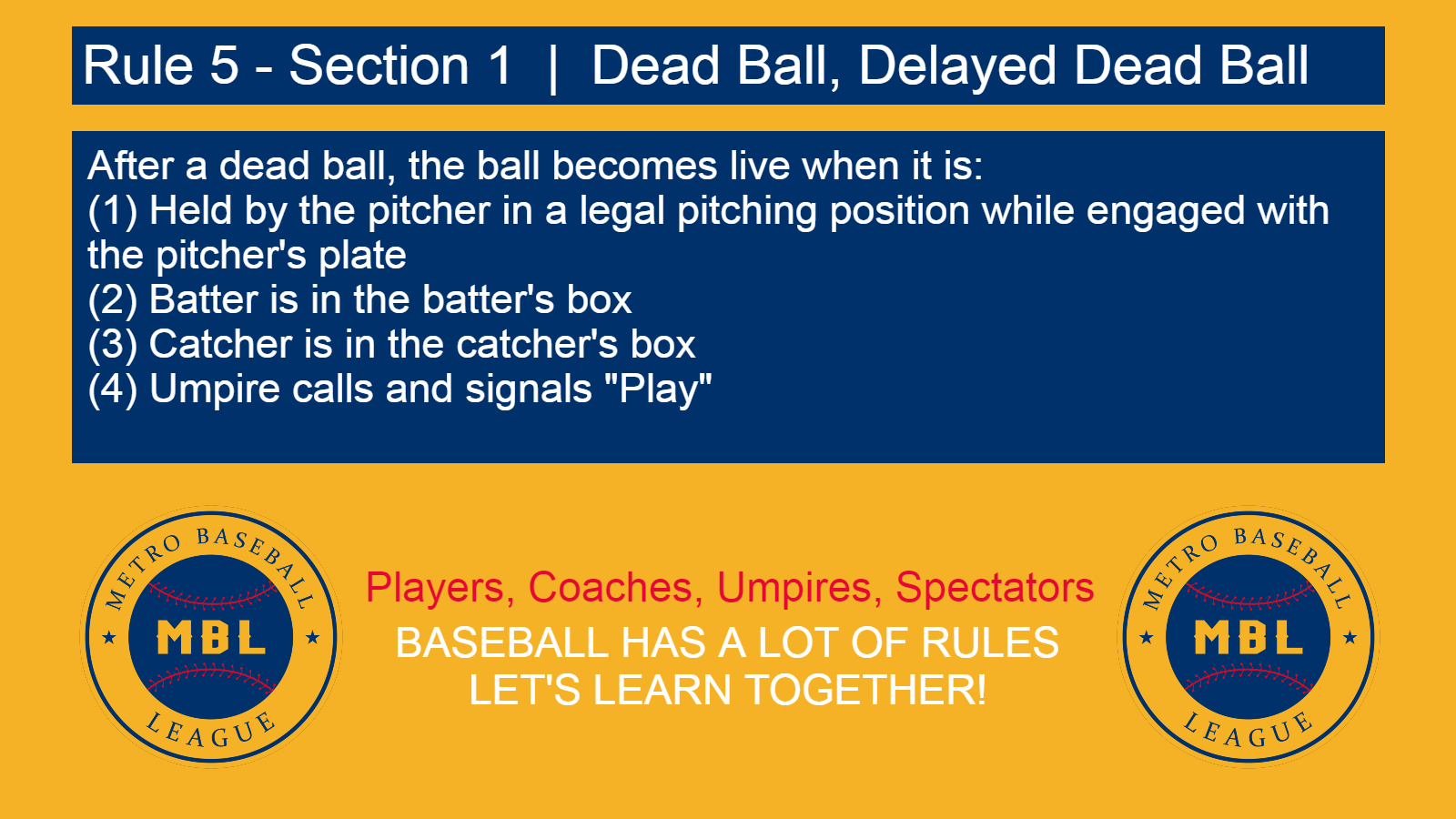
Week #1
Question of the Week
"I am a 12U coach. Can a starting pitcher re-enter a game as pitcher?"
ANSWER: Yes. It's important to note the difference between MBL league games and MBT Qualifier/State tournament rules on this topic. The tournament rule allows only a starting pitcher to re-enter as pitcher. The MBL league rules do not modify from the NFHS high school rules. Here's the NFHS rule:
3-1-2
" ... a player may be removed as pitcher and returned as pitcher only once per inning, provided the return as pitcher does not violate either the pitching, substitution or charged conference rule."
Rule of the Week:
Foul Ball vs Foul Tip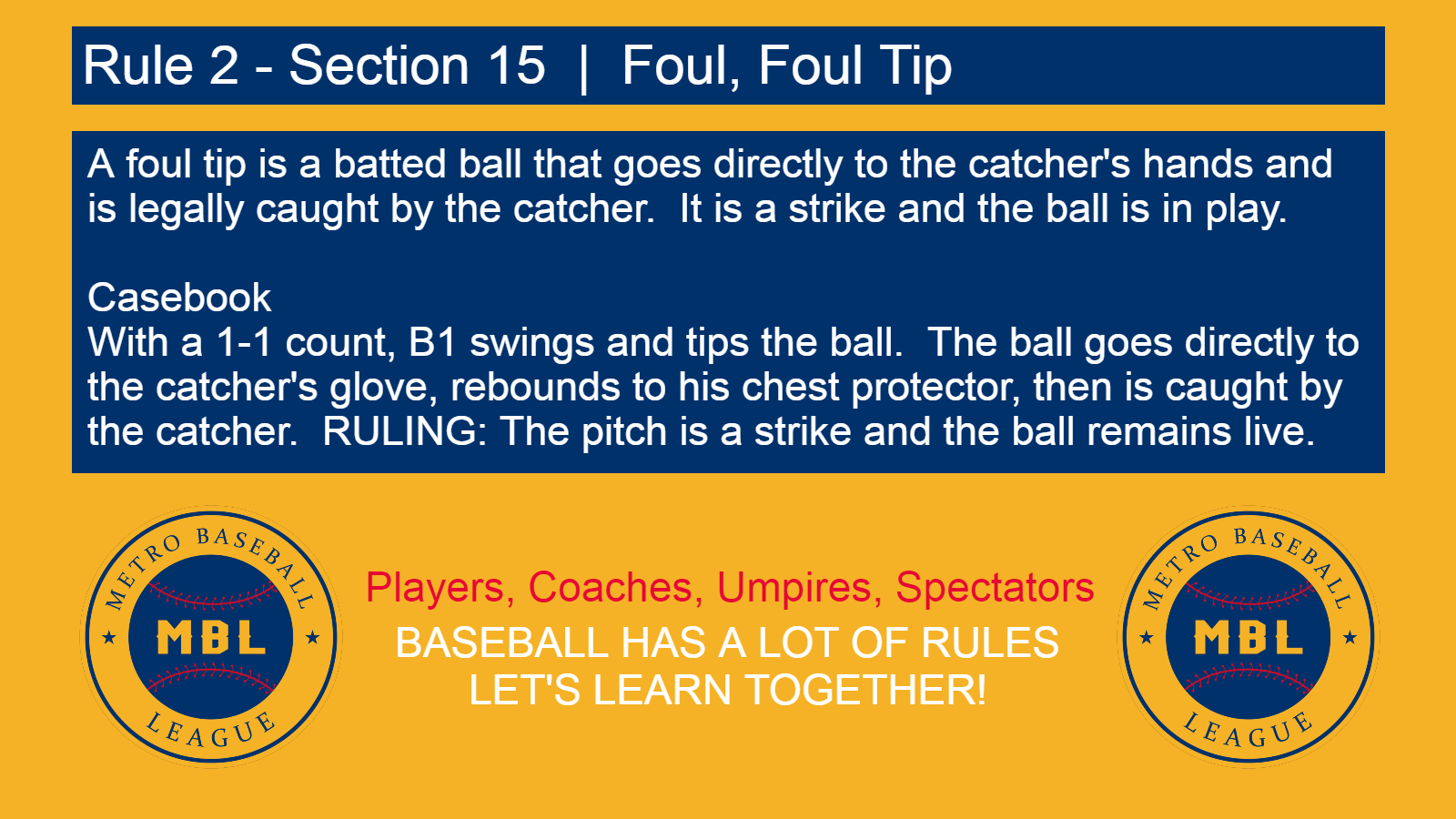
Week #2
Question of the Week
"Do we play Infield Fly rule in our 9U games?"
ANSWER: Yes. All MBL league games and MBT Qualifier/State tournament games use the Infield Fly rule.
2-19
"An infield fly is a fair fly (not including a line drive nor an attempted bunt) which can be caught by an infielder with ordinary effort, (rule does not preclude outfielders from being allowed to make the catch) and provided the hit is made before two are out and at a time when first and second bases or all bases are occupied."
Some notes on this rule:
- Ball is not dead
- Runners only need to tag up if the ball is caught
- There is a lot of judgement in this call, particularly in determining what "ordinary effort" is at each age level
* Yes, MBL plays this rule at all travel levels.